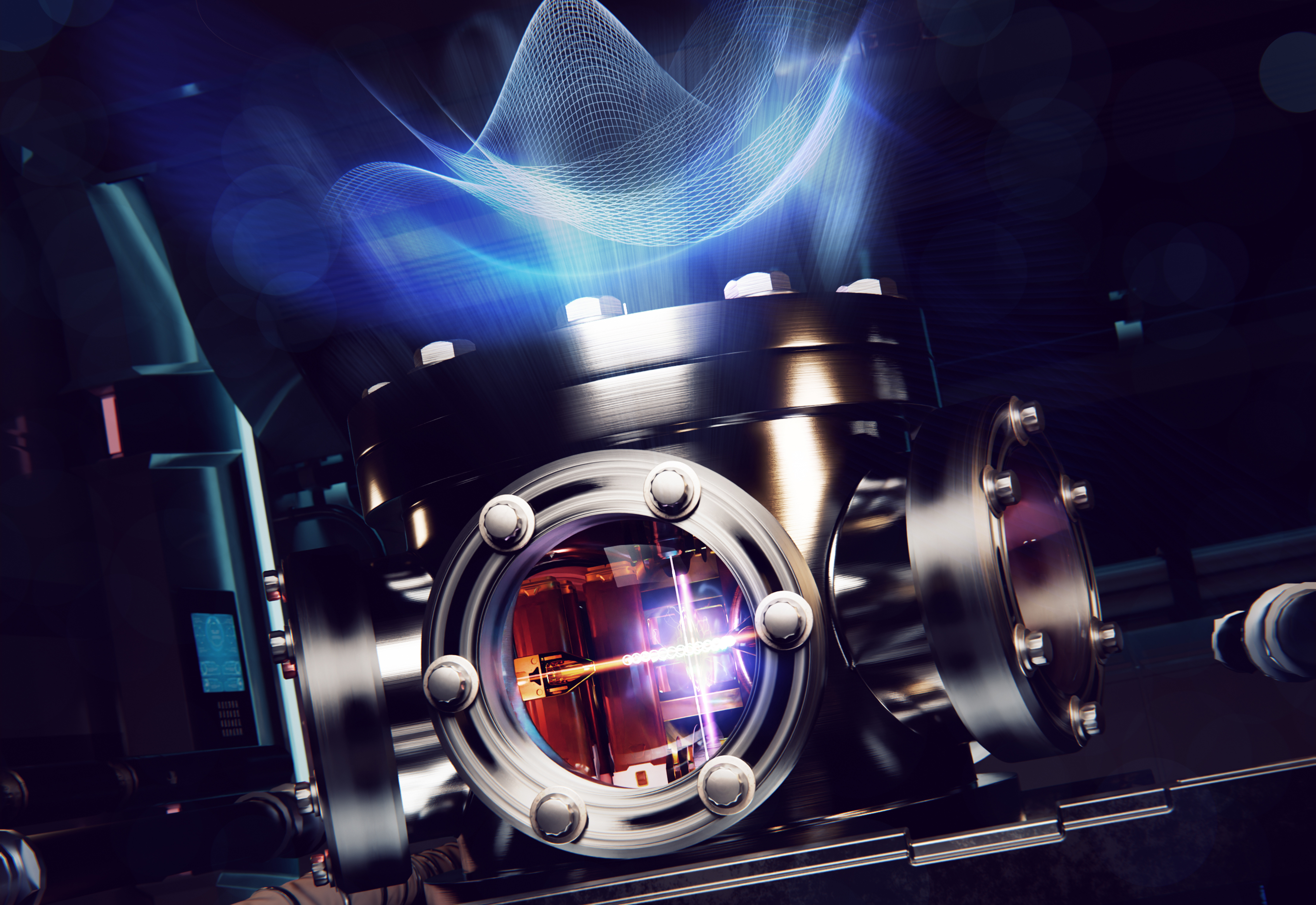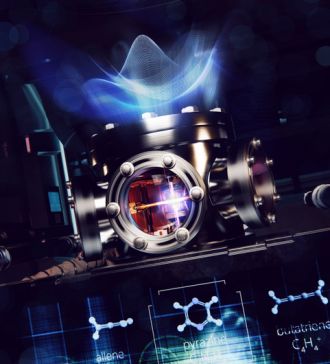Media release
From: The University of SydneyResearchers at the University of Sydney have successfully performed a quantum simulation of chemical dynamics with real molecules for the first time, marking a significant milestone in the application of quantum computing to chemistry and medicine.
Understanding in real time how atoms interact to form new compounds or interact with light has long been expected as a potential application of quantum technology. Now, quantum chemist Professor Ivan Kassal and Physics Horizon Fellow Dr Tingrei Tan, have shown it is possible using a quantum machine at the University of Sydney.
The innovative work leverages a novel, highly resource-efficient encoding scheme implemented on a trapped-ion quantum computer in the University of Sydney Nanoscience Hub, with implications that could help transform medicine, energy and materials science.
Their findings are published today in the Journal of the American Chemical Society.
Until now, quantum computers have been limited to calculating static properties of molecules – such as their energies – leaving the dynamic, time-evolving processes largely inaccessible given their complexity. However, this research pushes the frontier by simulating how molecules behave when excited by light – a process involving ultrafast electronic and vibrational changes that classical computers struggle to model accurately or efficiently.
Professor Kassal from the University of Sydney Nano Institute and School of Chemistry, compared this to mountain hiking. “It is one thing to understand your starting point, your end point, and how high you’ll need to climb. But this doesn’t help you understand the path you will take,” he said.
“Our new approach allows us to simulate the full dynamics of an interaction between light and chemical bonds. It’s like understanding the position and energy of the mountain hiker at any time point of their journey through the mountains.”
Future applications of this approach are in simulating chemical reactions and chemical dynamics in any situation where light is involved. This includes photosynthesis, DNA damage by UV, photodynamic therapies and cancer research, designing sunscreen or for improved solar energy systems.
Dr Tan said: “In all these cases, the ultrafast photo-induced dynamics are poorly understood. Having accurate simulation tools will accelerate the discovery of new materials, drugs, or other photoactive molecules.”
This study builds on an earlier study, where the research team in 2023 simulated abstract generic quantum dynamics by slowing the process down a factor of 100 billion times.
Dr Tan said: “We have taken that study and applied its approach to the dynamics of three different molecules after they’ve absorbed light.
“It is possible to simulate the interactions for these particular molecules using classical supercomputers. But more complex molecules will beyond their capabilities. Quantum tech will be able to simulate such complexity that is beyond all classical capability.”
Imagine witnessing a molecule absorb a photon, vibrate, and undergo rapid electronic transition – all encoded in a quantum simulation that unfolds over a staggering time-dilation factor of 100 billion (1011). This means the quantum simulation runs on an accessible timescale of milliseconds, while faithfully reproducing the ultrafast chemical events occurring in femtoseconds (10-15).
Significantly, unlike the earlier work of this team and other research efforts that only modelled abstract dynamical systems, this study simulates real molecules – demonstrating the method’s capacity to mimic actual chemical processes. In this instance, the simulation was of light interacting with allene (C3H4), butatriene (C4H4) and pyrazine (C4N2H4).
What makes this achievement particularly groundbreaking is the efficiency of their approach. The team employed an analog quantum simulation method using just a single trapped ion – a fraction of the hardware resources needed by traditional digital quantum computers.
Professor Kassal said: “Performing the same simulation using a more conventional approach in quantum computing would require 11 perfect qubits and 300,000 flawless entangling gates. Our approach is about a million times more resource-efficient, enabling complex chemical dynamics to be studied with far fewer resources than previously thought possible.”
This development holds great promise for understanding a wide array of light-driven chemical phenomena. Applications range from photosynthesis and DNA damage caused by UV radiation to advanced medical therapies like photodynamic therapy for cancers or skin disorders and sunscreens. For instance, a better grasp of ultrafast photo-induced processes could accelerate the discovery of new drugs, improve the design of energy-efficient solar cells, and contribute to the development of innovative photo-active materials.
This experimental breakthrough demonstrates that quantum simulation of real, complex molecules is within practical reach – an achievement that could dramatically accelerate scientific discovery in chemistry and beyond. By harnessing the power of quantum mechanics in a highly resource-efficient way, the University of Sydney team has opened a promising new pathway toward understanding the ultrafast chemical processes that underpin vital biological functions, energy solutions, and materials innovation.
DOWNLOAD photos of the quantum computer and Professor Kassal and Dr Tan at this link.
RESEARCH
Navickas, T. et al ‘Experimental quantum simulation of chemical dynamics’ (Journal of the American Chemical Society, 2025). DOI: 10.1021/jacs.5c03336
DECLARATION
The authors declare no competing interests. Research funding was supported by the Sydney Horizon Fellowship program, the Wellcome Leap Quantum for Bio program, the Australian Research Council, the US Office of Naval Research Global, the US Army Research Office Laboratory for Physical Sciences, Lockheed Martin and the Sydney Quantum Academy.





